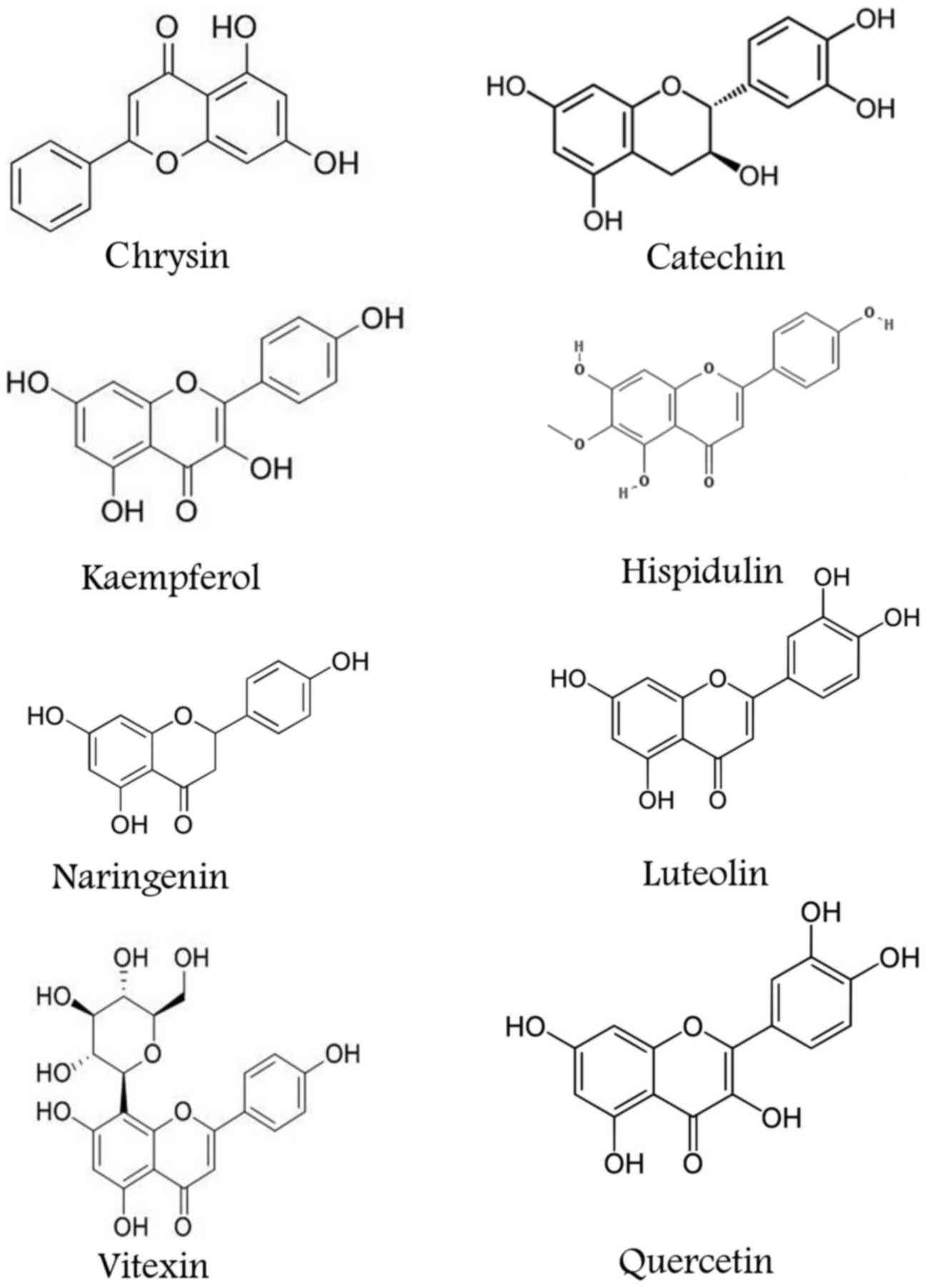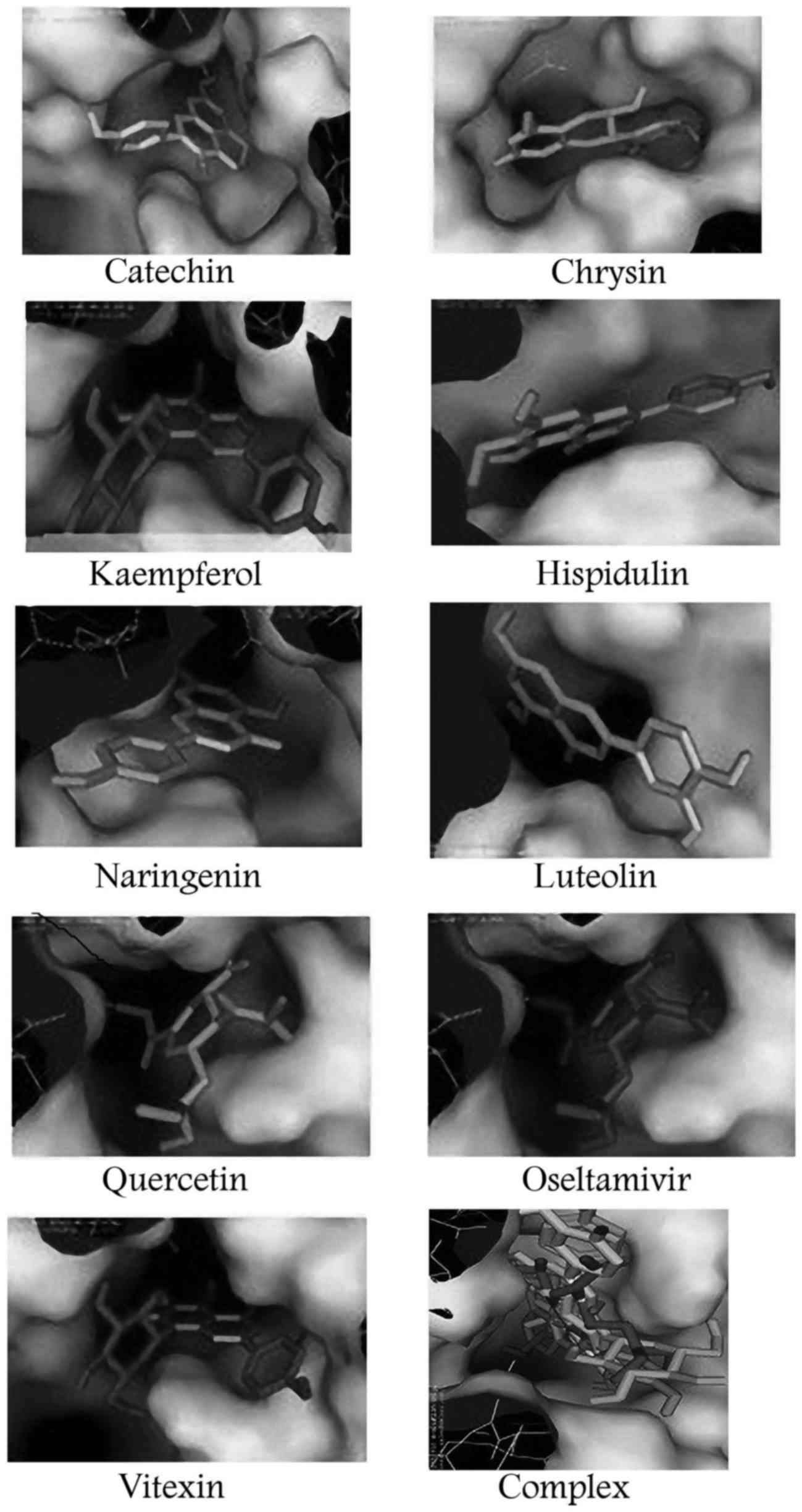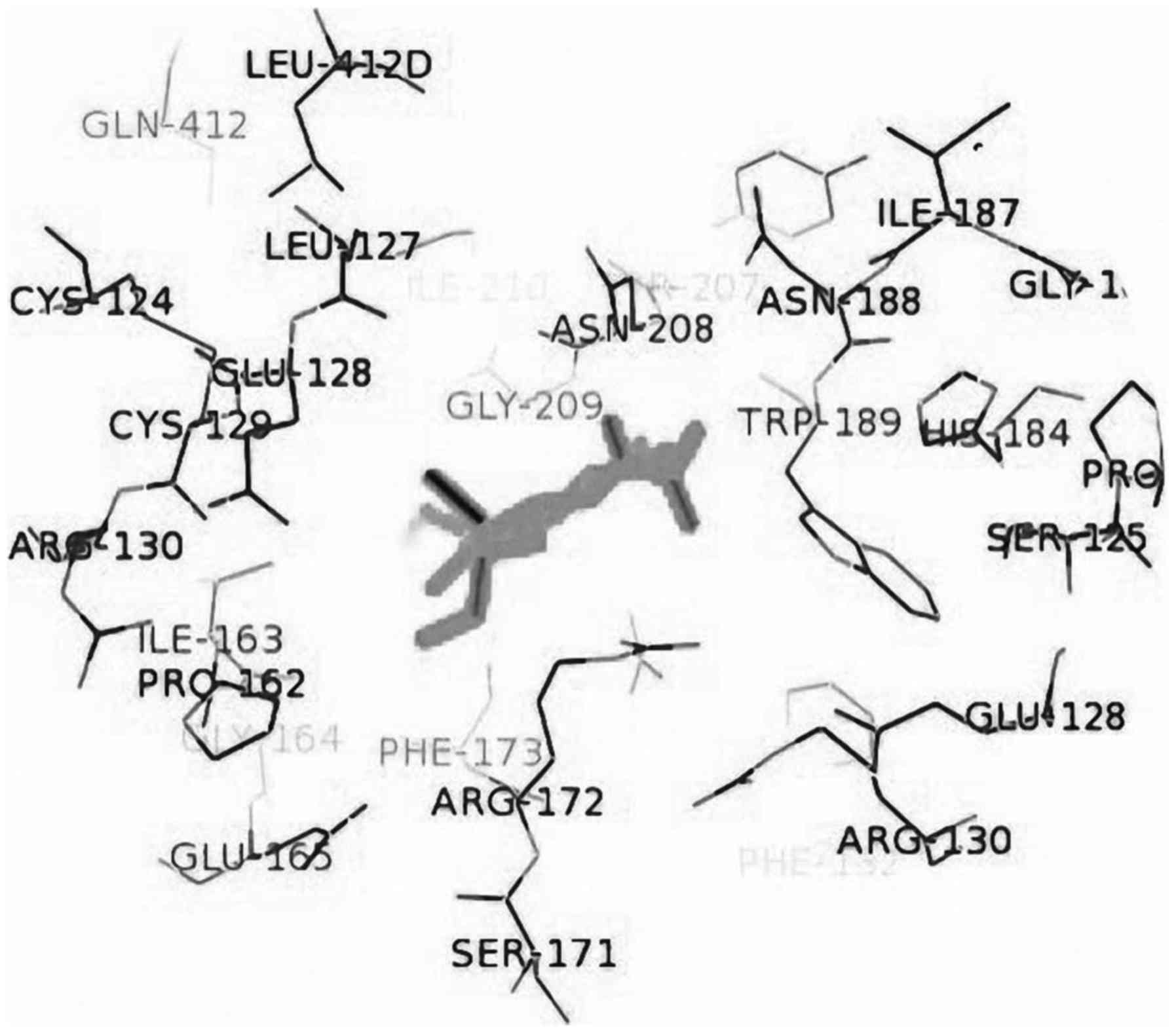|
1
|
Almond D: Is the 1918 Influenza pandemic
over? Long-term effects of in utero Influenza exposure in the
post-1940 US population. J Polit Econ. 114:672–712. 2006.
View Article : Google Scholar
|
|
2
|
Taubenberger JK and Morens DM: 1918
Influenza: The mother of all pandemics. Emerg Infect Dis. 12:15–22.
2006. View Article : Google Scholar : PubMed/NCBI
|
|
3
|
Neumann G, Noda T and Kawaoka Y: Emergence
and pandemic potential of swine-origin H1N1 influenza virus.
Nature. 459:931–939. 2009. View Article : Google Scholar : PubMed/NCBI
|
|
4
|
Neumann G and Kawaoka Y: Transmission of
influenza A viruses. Virology 479-480. 234–246. 2015. View Article : Google Scholar
|
|
5
|
Mallajosyula VV, Citron M, Ferrara F, Lu
X, Callahan C, Heidecker GJ, Sarma SP, Flynn JA, Temperton NJ,
Liang X, et al: Influenza hemagglutinin stem-fragment immunogen
elicits broadly neutralizing antibodies and confers heterologous
protection. Proc Natl Acad Sci USA. 111:E2514–E2523. 2014.
View Article : Google Scholar : PubMed/NCBI
|
|
6
|
Trott O and Olson AJ: AutoDock Vina:
Improving the speed and accuracy of docking with a new scoring
function, efficient optimization, and multithreading. J Comput
Chem. 31:455–461. 2010.PubMed/NCBI
|
|
7
|
Weis W, Brown JH, Cusack S, Paulson JC,
Skehel JJ and Wiley DC: Structure of the influenza virus
haemagglutinin complexed with its receptor, sialic acid. Nature.
333:426–431. 1988. View
Article : Google Scholar : PubMed/NCBI
|
|
8
|
Sibi G, Dhananjaya K and Bhimanagouda RP:
Molecular docking and receptor based analysis of H1N1 antiviral
drugs. Bioresearch Bull. 2:109–113. 2011.
|
|
9
|
Wang YT, Chan CH, Su ZY and Chen CL:
Homology modeling, docking, and molecular dynamics reveal HR1039 as
a potent inhibitor of 2009 A(H1N1) influenza neuraminidase. Biophys
Chem. 147:74–80. 2010. View Article : Google Scholar : PubMed/NCBI
|
|
10
|
Seniya C, Khan GJ, Misra R, Vyas V and
Kaushik S: In-silico modelling and identification of a possible
inhibitor of H1N1 virus. Asian Pac J Trop Dis. 4:S467–S476. 2014.
View Article : Google Scholar
|
|
11
|
Govorkova EA, Ilyushina NA, McClaren JL,
Naipospos TS, Douangngeun B and Webster RG: Susceptibility of
highly pathogenic H5N1 influenza viruses to the neuraminidase
inhibitor oseltamivir differs in vitro and in a mouse model.
Antimicrob Agents Chemother. 53:3088–3096. 2009. View Article : Google Scholar : PubMed/NCBI
|
|
12
|
Park JW and Jo WH: Computational design of
novel, high-affinity neuraminidase inhibitors for H5N1 avian
influenza virus. Eur J Med Chem. 45:536–541. 2010. View Article : Google Scholar : PubMed/NCBI
|
|
13
|
Du QS, Wang SQ, Huang RB and Chou KC:
Computational 3D structures of drug-targeting proteins in the
2009-H1N1 influenza A virus. Chem Phys Lett. 485:191–195. 2010.
View Article : Google Scholar
|
|
14
|
Gupta CL, Akhtar S, Bajpaib P, Kandpal KN,
Desai GS and Tiwari AK: Computational modeling and validation
studies of 3-D structure of neuraminidase protein of H1N1 influenza
A virus and subsequent in silico elucidation of piceid analogues as
its potent inhibitors. EXCLI J. 12:215–225. 2013.PubMed/NCBI
|
|
15
|
Bloom JD, Gong LI and Baltimore D:
Permissive secondary mutations enable the evolution of influenza
oseltamivir resistance. Science. 328:1272–1275. 2010. View Article : Google Scholar : PubMed/NCBI
|
|
16
|
Kumar S and Pandey AK: Chemistry and
biological activities of flavonoids: an overview.
ScientificWorldJournal. 2013:1627502013. View Article : Google Scholar : PubMed/NCBI
|
|
17
|
Dixon RA, Dey PM and Lamb CJ:
Phytoalexins: Enzymology and molecular biology. Adv Enzymol Relat
Areas Mol Biol. 55:1–136. 1983.PubMed/NCBI
|
|
18
|
Cushnie TP and Lamb AJ: Antimicrobial
activity of flavonoids. Int J Antimicrob Agents. 26:343–356. 2005.
View Article : Google Scholar : PubMed/NCBI
|
|
19
|
Orhan DD, Ozçelik B, Özgen S and Ergun F:
Antibacterial, antifungal, and antiviral activities of some
flavonoids. Microbiol Res. 165:496–504. 2010. View Article : Google Scholar : PubMed/NCBI
|
|
20
|
Cushnie TP and Lamb AJ: Recent advances in
understanding the antibacterial properties of flavonoids. Int J
Antimicrob Agents. 38:99–107. 2011. View Article : Google Scholar : PubMed/NCBI
|
|
21
|
Havsteen BH: The biochemistry and medical
significance of the flavonoids. Pharmacol Ther. 96:67–202. 2002.
View Article : Google Scholar : PubMed/NCBI
|
|
22
|
Middleton E Jr, Kandaswami C and
Theoharides TC: The effects of plant flavonoids on mammalian cells:
Implications for inflammation, heart disease, and cancer. Pharmacol
Rev. 52:673–751. 2000.PubMed/NCBI
|
|
23
|
Bandaruk Y, Mukai R and Terao J: Cellular
uptake of quercetin and luteolin and their effects on monoamine
oxidase-A in human neuroblastoma SH-SY5Y cells. Toxicol Rep.
1:639–649. 2014. View Article : Google Scholar : PubMed/NCBI
|
|
24
|
Li BQ, Fu T, Dongyan Y, Mikovits JA,
Ruscetti FW and Wang JM: Flavonoid baicalin inhibits HIV-1
infection at the level of viral entry. Biochem Biophys Res Commun.
276:534–538. 2000. View Article : Google Scholar : PubMed/NCBI
|
|
25
|
Alam MA, Subhan N, Rahman MM, Uddin SJ,
Reza HM and Sarker SD: Effect of citrus flavonoids, naringin and
naringenin, on metabolic syndrome and their mechanisms of action.
Adv Nutr. 5:404–417. 2014. View Article : Google Scholar : PubMed/NCBI
|
|
26
|
Ganugapati J, Mukkavalli S and Sahithi A:
Docking studies of green tea flavonoids as insulin mimetics. Int J
Comput Appl. 30:48–52. 2011.
|
|
27
|
Jeong HJ, Ryu YB, Park S-J, Kim JH, Kwon
H-J, Kim JH, Park KH, Rho MC and Lee WS: Neuraminidase inhibitory
activities of flavonols isolated from Rhodiola rosea roots and
their in vitro anti-influenza viral activities. Bioorg Med Chem.
17:6816–6823. 2009. View Article : Google Scholar : PubMed/NCBI
|
|
28
|
Ganugapati J, Baldwa A and Lalani S:
Molecular docking studies of banana flower flavonoids as insulin
receptor tyrosine kinase activators as a cure for diabetes
mellitus. Bioinformation. 8:216–220. 2012. View Article : Google Scholar : PubMed/NCBI
|
|
29
|
Lu SJ and Chong FC: Combining molecular
docking and molecular dynamics to predict the binding modes of
flavonoid derivatives with the neuraminidase of the 2009 H1N1
influenza A virus. Int J Mol Sci. 13:4496–4507. 2012. View Article : Google Scholar : PubMed/NCBI
|
|
30
|
Huang SY and Zou X: Advances and
challenges in protein-ligand docking. Int J Mol Sci. 11:3016–3034.
2010. View Article : Google Scholar : PubMed/NCBI
|
|
31
|
Seeliger D and de Groot BL: Ligand docking
and binding site analysis with PyMOL and Autodock/Vina. J Comput
Aided Mol Des. 24:417–422. 2010. View Article : Google Scholar : PubMed/NCBI
|
|
32
|
Morris GM, Huey R and Olson AJ: Using
AutoDock for ligand-receptor docking. Curr Protoc Bioinformatics.
24:8.14.1–8.14.40. 2008.
|
|
33
|
Ramharack P and Soliman MES:
Bioinformatics-based tools in drug discovery: the cartography from
single gene to integrative biological networks. Drug Discov Today.
23:1658–1665. 2018. View Article : Google Scholar : PubMed/NCBI
|
|
34
|
Munsamy G and Soliman MES: Homology
modeling in drug discovery-an update on the last decade. Lett Drug
Des Discov. 14:1099–1111. 2017. View Article : Google Scholar
|
|
35
|
Tsujikawa H, Sato K, Wei C, Saad G,
Sumikoshi K, Nakamura S, Terada T and Shimizu K: Development of a
protein-ligand-binding site prediction method based on interaction
energy and sequence conservation. J Struct Funct Genomics.
17:39–49. 2016. View Article : Google Scholar : PubMed/NCBI
|
|
36
|
Liu AL, Wang HD, Lee SM, Wang YT and Du
GH: Structure-activity relationship of flavonoids as influenza
virus neuraminidase inhibitors and their in vitro anti-viral
activities. Bioorg Med Chem. 16:7141–7147. 2008. View Article : Google Scholar : PubMed/NCBI
|
|
37
|
Luria SE and Delbrück M: Mutations of
bacteria from virus sensitivity to virus resistance. Genetics.
28:491–511. 1943.PubMed/NCBI
|
|
38
|
Russo M, Spagnuolo C, Tedesco I, Bilotto S
and Russo GL: The flavonoid quercetin in disease prevention and
therapy: Facts and fancies. Biochem Pharmacol. 83:6–15. 2012.
View Article : Google Scholar : PubMed/NCBI
|
|
39
|
Kuo SM: Dietary flavonoid and cancer
prevention: Evidence and potential mechanism. Crit Rev Oncog.
8:47–69. 1997. View Article : Google Scholar : PubMed/NCBI
|
|
40
|
Chen Y, Wu Q, Song L, He T, Li Y, Li L, Su
W, Liu L, Qian Z and Gong C: Polymeric micelles encapsulating
fisetin improve the therapeutic effect in colon cancer. ACS Appl
Mater Interfaces. 7:534–542. 2015. View Article : Google Scholar : PubMed/NCBI
|
|
41
|
Drake JW: The distribution of rates of
spontaneous mutation over viruses, prokaryotes, and eukaryotes. Ann
N Y Acad Sci. 870:(1 MOLECULAR STR). 100–107. 1999. View Article : Google Scholar : PubMed/NCBI
|
|
42
|
Elena SF and Lenski RE: Evolution
experiments with microorganisms: The dynamics and genetic bases of
adaptation. Nat Rev Genet. 4:457–469. 2003. View Article : Google Scholar : PubMed/NCBI
|
|
43
|
Duffy S, Shackelton LA and Holmes EC:
Rates of evolutionary change in viruses: Patterns and determinants.
Nat Rev Genet. 9:267–276. 2008. View
Article : Google Scholar : PubMed/NCBI
|
|
44
|
Yogesh M and Saurabh S: Flavonoid: a
pharmacologically significant scaffold. J Pharm Pharm Sci.
6:488–504. 2017.
|
|
45
|
Eteraf-Oskouei T and Najafi M: Traditional
and modern uses of natural honey in human diseases: A review. Iran
J Basic Med Sci. 16:731–742. 2013.PubMed/NCBI
|
|
46
|
Viuda-Martos M, Ruiz-Navajas Y,
Fernández-López J and Pérez-Álvarez JA: Functional properties of
honey, propolis, and royal jelly. J Food Sci. 73:117–124. 2008.
View Article : Google Scholar
|
|
47
|
Gupta PD and Birdi TJ: Development of
botanicals to combat antibiotic resistance. J Ayurveda Integr Med.
8:266–275. 2017. View Article : Google Scholar : PubMed/NCBI
|
|
48
|
Stanković N, Mihajilov-Krstev T, Zlatković
B, Stankov-Jovanović V, Mitić V, Jović J, Čomić L, Kocić B and
Bernstein N: Antibacterial and antioxidant activity of traditional
medicinal plants from the Balkan Peninsula. NJAS Wagening J Life
Sci. 78:21–28. 2016. View Article : Google Scholar
|
|
49
|
Lee JH, Cho S, Paik HD, Choi CW, Nam KT,
Hwang SG and Kim SK: Investigation on antibacterial and antioxidant
activities, phenolic and flavonoid contents of some thai edible
plants as an alternative for antibiotics. Asian-Australas J Anim
Sci. 27:1461–1468. 2014. View Article : Google Scholar : PubMed/NCBI
|
|
50
|
Gonçalves E, Moreira C, Grosso P, Andrade
B, Valentão P and Romano A: Phenolic profile, antioxidant activity
and enzyme inhibitory activities of extracts from aromatic plants
used in Mediterranean diet. J Food Sci Technol. 54:219–227. 2017.
View Article : Google Scholar : PubMed/NCBI
|

















